Full Name Judi Ross Name Judi Chamberlin Books On our own Children 1 | Years active 1971–2010 Partner Marty Federman (2006–) Nationality American Role Author | |
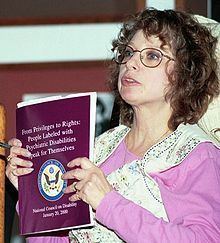 | ||
Occupation Director of Education National Empowerment CenterCo-chair WNUSP Known for Internationally known psychiatric survivor movement activist and author Notable work On Our Own: Patient Controlled Alternatives to the Mental Health System (1978)From Privileges to Rights (2000) Education Midwood High School, Brooklyn | ||
Judi chamberlin her life our movement
Judi Chamberlin (née Ross; October 30, 1944 – January 16, 2010) was an American activist, leader, organizer, public speaker and educator in the psychiatric survivors movement. Her political activism followed her involuntary confinement in a psychiatric facility in the 1960s. She was the author of On Our Own: Patient-Controlled Alternatives to the Mental Health System, which is a foundational text in the Mad Pride movement.
Contents
- Judi chamberlin her life our movement
- Judi chamberlin and marianne farkas march 2009
- Early life
- Psychiatric experience
- Activism
- Personal life
- Death
- Published works
- Awards
- References
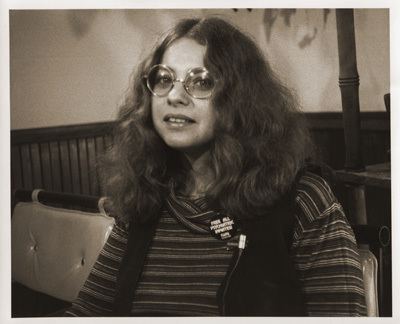
Judi chamberlin and marianne farkas march 2009
Early life
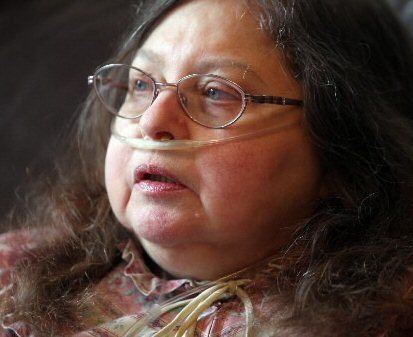
Judi Chamberlin was born Judi Ross in Brooklyn in 1944. She was the only daughter of Harold and Shirley Jaffe Ross. Her father was a factory worker when she was a child, later he worked as an executive in the advertising industry. Her mother was employed as a school secretary. Chamberlin attended Midwood High School.
Psychiatric experience
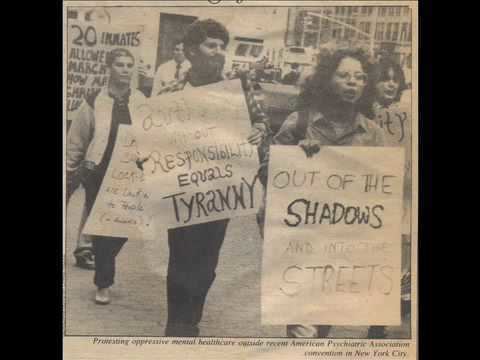
In 1966, at the age of twenty-one and recently married, Chamberlin suffered a miscarriage and, according to her own account, became severely depressed. Following psychiatric advice, she voluntarily signed herself into a psychiatric facility as an in-patient. However, after several voluntary admissions she was diagnosed with schizophrenia and involuntarily committed to a psychiatric ward in a New York state hospital for a period of five months.
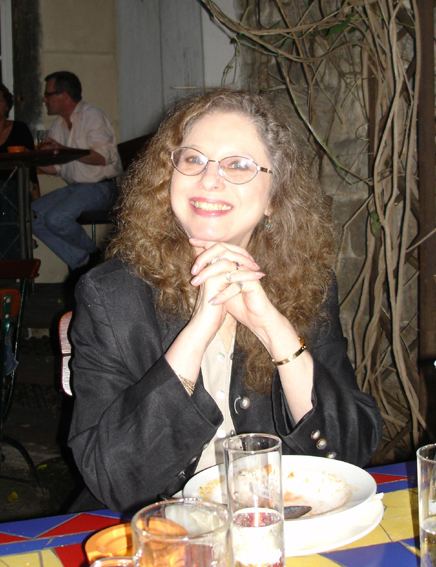
As an involuntary patient, she witnessed and experienced a range of abuses. Seclusion rooms and refractory wards were used for resistive patients, even when their forms of resistance were non-violent. The psychiatric medication she was given made her feel tired and affected her memory. As an involuntary patient she was unable to leave the facility and became, she said, "a prisoner of the system". The derogation of her civil liberties that she experienced as an inmate provided the impetus for her activism as a member of the psychiatric survivor movement.
Activism
Following her discharge, Chamberlin became involved in the nascent psychiatric patients' rights movement. In 1971 she joined the Boston-based Mental Patients Liberation Front (MPLF), and she also became associated with the Center for Psychiatric Rehabilitation at Boston University . Her affiliation with this center facilitated her role in co-founding the Ruby Rogers Advocacy and Drop-in-Centers, which are self-help institutions staffed by former psychiatric patients. and was also a founder and later a Director of Education of the National Empowerment Center. The latter is also an ex-patient run organization that provides information, technical assistance, and support to users and survivors of the psychiatric system. Its mission statement declares its intent is to "carry a message of recovery, empowerment, hope and healing to people who have been labeled with mental illness".
She was also involved with the National Association for Rights Protection and Advocacy and was an influential leader in the Mad Pride movement.
Chamberlin met David Oaks in 1976, when he was the chief executive of MindFreedom International. They were both members of the Mental Patients Liberation Front. She later became a board member of MindFreedom International, an umbrella organization for approximately one hundred grass roots groups campaigning for the human rights of people labeled "mentally ill."
In 1978, her book On Our Own: Patient Controlled Alternatives to the Mental Health System was published. It became the standard text of the psychiatric survivor movement, and in it Chamberlain coined the word "mentalism." She used the word "mentalism" also in a book chapter in 1975.
She was a major informant for and assisted in the drafting of the National Council on Disability's federal report From Privileges to Rights: People Labeled with Psychiatric Disabilities Speak for Themselves, which was published in 2000. The report argued that psychiatric patients should enjoy the same basic human rights as other citizens and that patient privileges contingent on good behavior within the psychiatric system, such as the ability to wear their own clothes, leave the confines of a psychiatric facility, or receive visitors, should instead be regarded as basic rights.
Chamberlin was elected as co-chair of the World Network of Users and Survivors of Psychiatry (WNUSP) at the launching conference and General Assembly in Vancouver, Canada in 2001, and served in this capacity until the next General Assembly in 2004. During this period she also served on the Panel of Experts advising the United Nations special rapporteur on disability, on behalf of WNUSP in its role as a Non-governmental organization, representing psychiatric survivors.
She appears in the 2011 disability rights documentary Lives Worth Living.
Personal life
Her marriages to Howard Cahn and then Robert Chamberlin both ended in divorce. Her third marriage in 1972 was to Ted Chabasinski, also a psychiatric survivor movement activist, whom she met at the Mental Patients Liberation Project in 1971. They married in 1972 and separated two years later. They remained close friends following this and only divorced in 1985 when Chabasinski wanted to marry another woman. Since 2006, Chamberlin's partner was Martin Federman. She had one daughter, Julie Chamberlin, and three grandchildren, Edward, Kyle, and Vivian.
Death
Chamberlin died of an un-diagnosed lung disease at her home in Arlington, Massachusetts on January 16, 2010.
